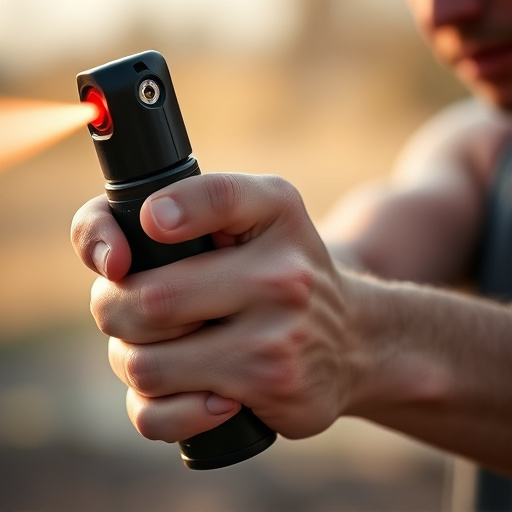TL;DR: Mastering concealed pepper spray carrying techniques enhances personal safety by enabling quick access to non-lethal self-defense during emergencies. Understanding local laws, learning accurate deployment methods, and regular training ensure effective use while adhering to legal requirements. Hidden yet accessible holsters, backpacks, or pouches allow discreet carry, crucial for public spaces where open carry is restricted.
“In today’s diverse and often unpredictable world, carrying an inflammatory agent personal protection spray (or pepper spray) has become a serious consideration for many individuals seeking enhanced safety. This article guides you through the essentials of concealed pepper spray carrying techniques, offering insights on understanding its capabilities, navigating legal considerations related to concealed carry permits, mastering effective deployment strategies, and embracing training and responsibilities for safe usage.”
- Understanding Inflammatory Agent Personal Protection Spray
- Legal Considerations and Concealed Carry Permits
- Effective Carrying Techniques for Optimal Safety
- Training and Responsibilities for Safe Pepper Spray Use
Understanding Inflammatory Agent Personal Protection Spray
Inflammatory agent personal protection spray, often referred to as pepper spray, is a powerful self-defense tool designed to incapacitate an assailant temporarily. This non-lethal spray contains capsaicin, the active ingredient found in chili peppers, which irritates the eyes, nose, and respiratory system when inhaled or made contact with skin. Understanding how this spray works and its carrying techniques is crucial for anyone looking to enhance their personal safety.
Concealed pepper spray carrying techniques are essential for effective self-defense. Since pepper spray can be easily carried in pockets, purses, or even concealed on the body, users must learn proper deployment methods. Quick access during an emergency situation can make all the difference. Techniques include understanding the spray range, knowing how to aim accurately, and practicing regular training to ensure a calm response when facing potential threats.
Legal Considerations and Concealed Carry Permits
When considering carrying a personal protection spray, it’s crucial to understand the legal implications and restrictions in your area. The legality of concealed pepper spray varies significantly by jurisdiction, with some states permitting its carry while others have stringent regulations or outright ban it. In many places, obtaining a concealed carry permit is required before you can legally transport a self-defense spray.
Understanding local concealed carry techniques and regulations is paramount for responsible pepper spray ownership. This includes learning about range safety procedures, storage requirements, and any specific rules regarding the types of defensive sprays allowed. Staying informed on these details not only ensures compliance with the law but also empowers you to defend yourself effectively should the need arise.
Effective Carrying Techniques for Optimal Safety
When it comes to personal protection, learning effective carrying techniques for your concealed pepper spray is paramount. The ability to quickly and discreetly deploy your spray during an emergency can be a game-changer. One of the key aspects to master is understanding how to carry it in various situations while ensuring optimal safety.
For instance, when outdoors or in public spaces, consider securing the spray in a hidden yet easily accessible holster or pouch. This could be attached to your belt loop or tucked into a pocket. For those who prefer hands-free carrying, a backpack or bag with a designated compartment for the spray can be ideal. Remember, the goal is to have it within reach while maintaining discretion, especially if you’re in areas where open carry of pepper spray might not be permitted.
Training and Responsibilities for Safe Pepper Spray Use
Training and responsibilities for safe pepper spray use are paramount, especially for individuals carrying concealed pepper spray. Effective training programs educate users on proper handling, deployment techniques, and post-application first aid. This includes understanding the range and effectiveness of the spray, as well as legal implications and de-escalation strategies.
Responsibilities extend to knowing local regulations regarding concealed pepper spray carrying techniques and always storing the device securely. Users must also be prepared for unexpected situations, practicing deployment drills regularly. Moreover, it’s crucial to keep the spray in optimal condition, checking expiration dates and ensuring proper maintenance to guarantee its reliability when needed most.
Inflammatory agent personal protection spray, commonly known as pepper spray, is a powerful tool for self-defense. Understanding its legal aspects, proper carrying techniques, and training responsibilities is crucial to ensure safe and effective use. By adhering to these guidelines, individuals can confidently carry concealed pepper spray, empowering them to protect themselves in potential dangerous situations. Remember, knowledge and preparation are key to navigating the challenges of personal safety.
